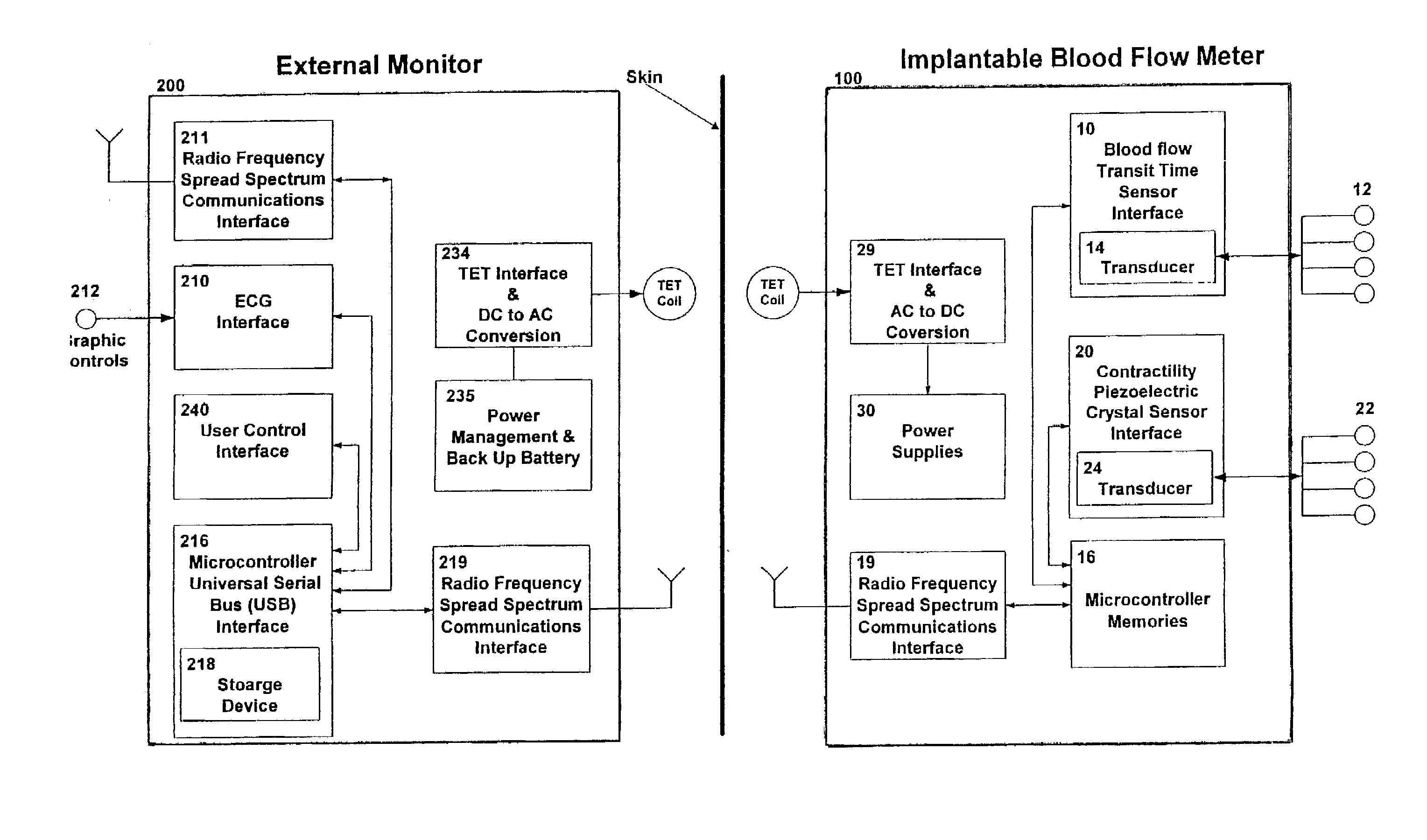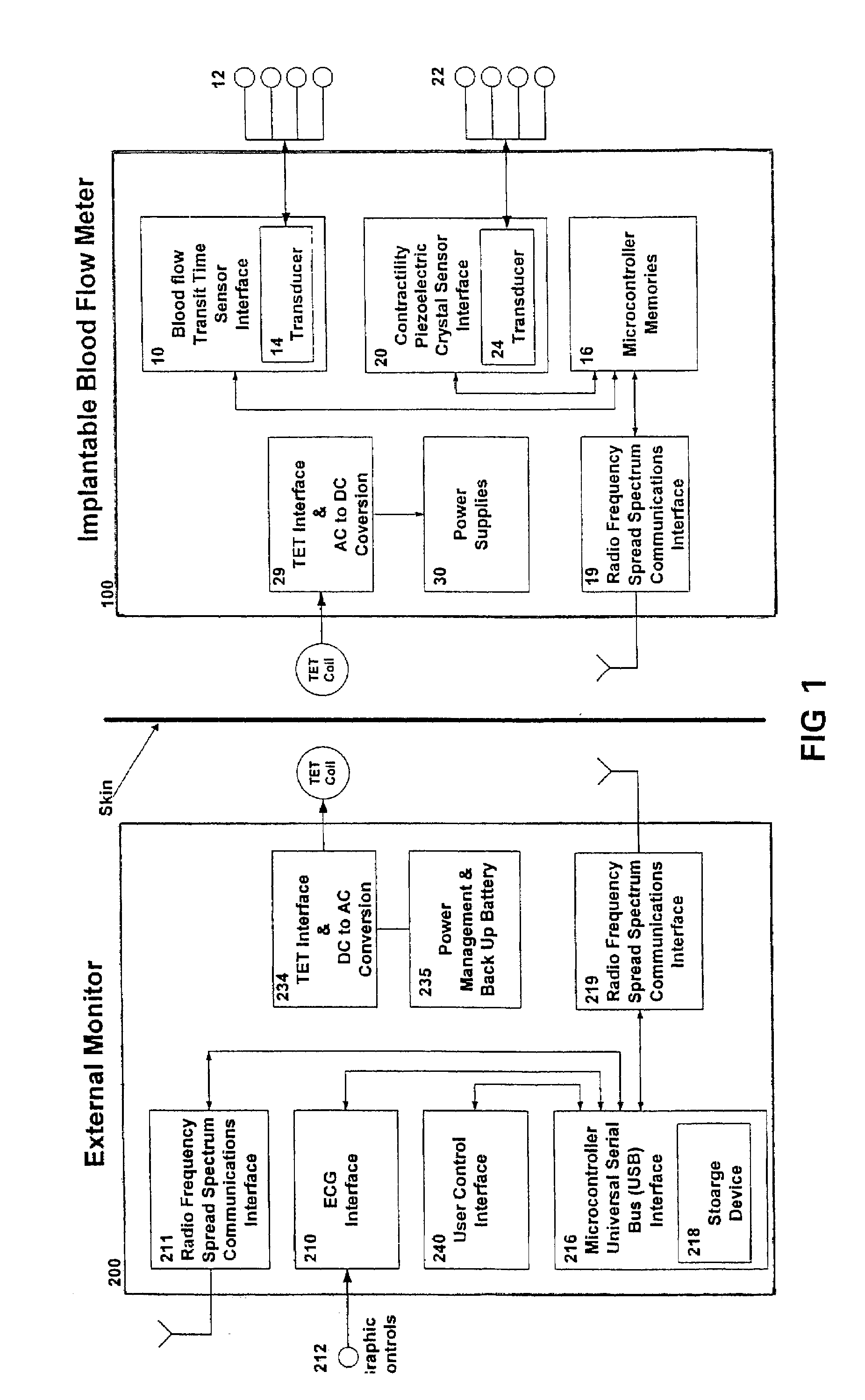Implantable blood flow monitoring system
a monitoring system and implantable technology, applied in the field of medical diagnostic equipment, can solve the problems of ptca/stent patients often developing restenosis, and affecting the quality of life of patients
- Summary
- Abstract
- Description
- Claims
- Application Information
AI Technical Summary
Benefits of technology
Problems solved by technology
Method used
Image
Examples
Embodiment Construction
[0014]A blood flow monitoring system according to the present invention following surgical implantation affords non-invasive monitoring of blood flow within a single blood vessel or plurality thereof in heart function. In a preferred system, output data is transmitted to a remote location from the patient to his physician for review. In a still more preferred embodiment a physician reviewing cardiac function information remotely is able to communicate by way of the present invention to illustratively: adjust a medicament pump operation to affect a modification of coronary vessel response, modify ventricular assist device operation or modify pacemaker operation. Alternatively, the physician can communicate a warning to the patient by a conventional telecommunications device. The blood flow monitoring system of the present invention has utility in allowing physicians and healthcare providers an early intervention upon a decrease in blood flow within a coronary vessel and / or decrease i...
PUM
 Login to View More
Login to View More Abstract
Description
Claims
Application Information
 Login to View More
Login to View More - R&D
- Intellectual Property
- Life Sciences
- Materials
- Tech Scout
- Unparalleled Data Quality
- Higher Quality Content
- 60% Fewer Hallucinations
Browse by: Latest US Patents, China's latest patents, Technical Efficacy Thesaurus, Application Domain, Technology Topic, Popular Technical Reports.
© 2025 PatSnap. All rights reserved.Legal|Privacy policy|Modern Slavery Act Transparency Statement|Sitemap|About US| Contact US: help@patsnap.com



